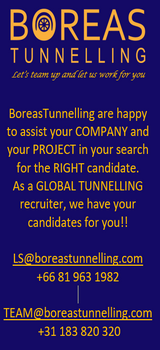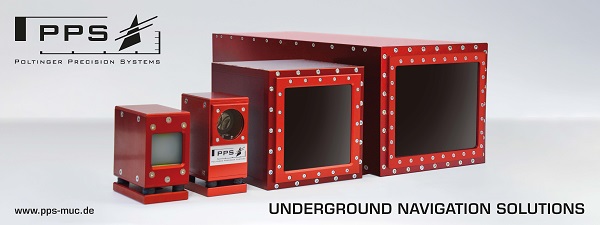Gateway Tunnel project split into four contract packages to speed work
Gateway Development Commision announces:
Gateway Development Commission Announces Improved Contracting Strategy For Hudson Tunnel Project To Ensure Competitive Bidding Pool And Advance Early Work
Approach Divides Tunneling Component of Hudson Tunnel Project into 4 Packages, Including “Hudson River Ground Stabilization” Early Work
Newark/New York – The Gateway Development Commission today announced that it has revised its procurement strategy to build the Hudson Tunnel Project, dividing the “Civil Works” construction of the new tunnel from one package to four packages, including additional early works projects.
The Civil Works is the largest portion of the Hudson Tunnel Project. It encompasses the excavation and construction of a new tunnel under the Palisades in New Jersey and the Hudson River and connecting to Penn Station in Manhattan. This portion of the project alone consists of 2 tubes, each 2.4 miles long
The Civil Works portion of the Hudson Tunnel Project will now be divided into four contract packages, rather than the one package previously contemplated, to ensure there is a robust and competitive bidding pool for this work:
➢ Package 1A, the portion of the tunnel through the Palisades to the construction shaft in Hoboken, New Jersey, which will be delivered via Design-Bid-Build;
➢ Package 1B, the section of the tunnel going through the bulkhead of the West Side of Manhattan, under Hudson River Park and connecting to the new construction shaft between West 30th and 29th Streets, which will be delivered via Design-Build;
➢ and Package 1C, which includes the tunneling under the Hudson River from the new construction shaft in Hoboken to the new construction shaft in Manhattan, which will be delivered via Design-Bid-Build.
Packages 1A and 1B are scheduled to commence work in 2024 after a Full Funding Grant Agreement under the FTA’s Capital Investment Grants Program is signed by the FTA and GDC. Package 1C is scheduled to commence work in 2025
In addition, the fourth contract package, Contract Package EA1, is an early work project which is expected to commence prior to the project’s full construction. This “Hudson River Ground Stabilization” package will help de- risk the full project by fortifying and stabilizing the river bottom on the New York side of the Hudson River. This work will create an improved condition in which to bore the new tunnel through the eastern portion of the Hudson River section of the project. The work will also comply with all environmental regulations to ensure the protection of the river and be conducted only during specified time ranges to protect fish spawning and wildlife. This package will be delivered via Design-Build.
Balpreet Grewal-Virk, GDC Co-Chair and NJ Commissioner said, “Our job is to get the Hudson Tunnel Project built. Advancing critically important parts of the project and developing contracting strategies with private industry that will ensure a competitive, qualified group of bidders, are key steps to staying ahead of the game, keeping the Gateway Hudson Tunnel Project moving forward, and delivering this project for the region and the nation.”
Alicia Glen, GDC Co-Chair and NY Commissioner, said, "GDC is committed to building the Hudson Tunnel Project efficiently and effectively. We are working hand-in-hand with the private sector to meet that commitment, so there is competition and innovation that delivers a more reliable, 21st Century experience for millions of riders."
Alicia Glen, GDC Co-Chair and NY Commissioner, said, "GDC is committed to building the Hudson Tunnel Project efficiently and effectively. We are working hand-in-hand with the private sector to meet that commitment, so there is competition and innovation that delivers a more reliable, 21st Century experience for millions of riders."
Tony Coscia, GDC Vice-Chair and Amtrak Commissioner, added, “This project is vital to keeping hundreds of thousands of passengers moving up and down the Northeast Corridor every day. We will always move nimbly in ensuring we are utilizing best practices in contracting and in moving early work forward so we can finally replace a more than Century old tunnel that the nation’s economy relies upon with modern, 21st Century rail.
“The industry that will build the Hudson Tunnel Project advised us that the best way to ensure a competitive bidding pool was to divide up the largest, most complicated portion of the project into multiple pieces of work. We listened,” said GDC CEO Kris Kolluri. “By moving more complex early work forward, and making multiple packages for the new tunneling work, we’re taking an approach that will mean both that we are ready when the full project undertakes construction, and that we have the best in the business to deliver the most urgent infrastructure project in the nation.’
The new approach was developed utilizing feedback from multiple potential private sector contractors on the work, through both a “Market Sounding” event GDC held for more than 200 members of the industry in early February, and a series of one-on-one follow up meetings. The early works and tunnel packages were further refined in partnership with the Federal Transit Administration, as part of the work to advance the Capital Investment Grant process GDC is currently undergoing.
The GDC also plans additional early works for Package 1 projects including: The Manhattan Bulkhead Tunneling Work; Excavation Work Near 12th Avenue in New York; and the Tonnelle Avenue Area Portal Preparation Work. Each of these advance the design of their respective package, helping de-risk the project by providing more certainty to contractors.
GDC anticipates that the initial contract, the Hudson River Ground Stabilization Contract Package EA1, will begin the procurement process in the coming period with a Request for Qualifications. Procurement for the Palisades Tunnel Contract Package 1A will follow soon thereafter
cover tunnel photo by: Matt Brown from London, England / CC BY
Copyright 2019-2024 TunnelContact.com









Such tender strategies end up costing the taxpayer a fortune. Often companies bear the costs of the not-so-profitable work with the expectation that they will be off-setting them with the juicy parts.
When you group the work with some packages getting more juicy parts than others, then the contractors bidding for the less-juicy packages will ask for more money.
As simple as this.